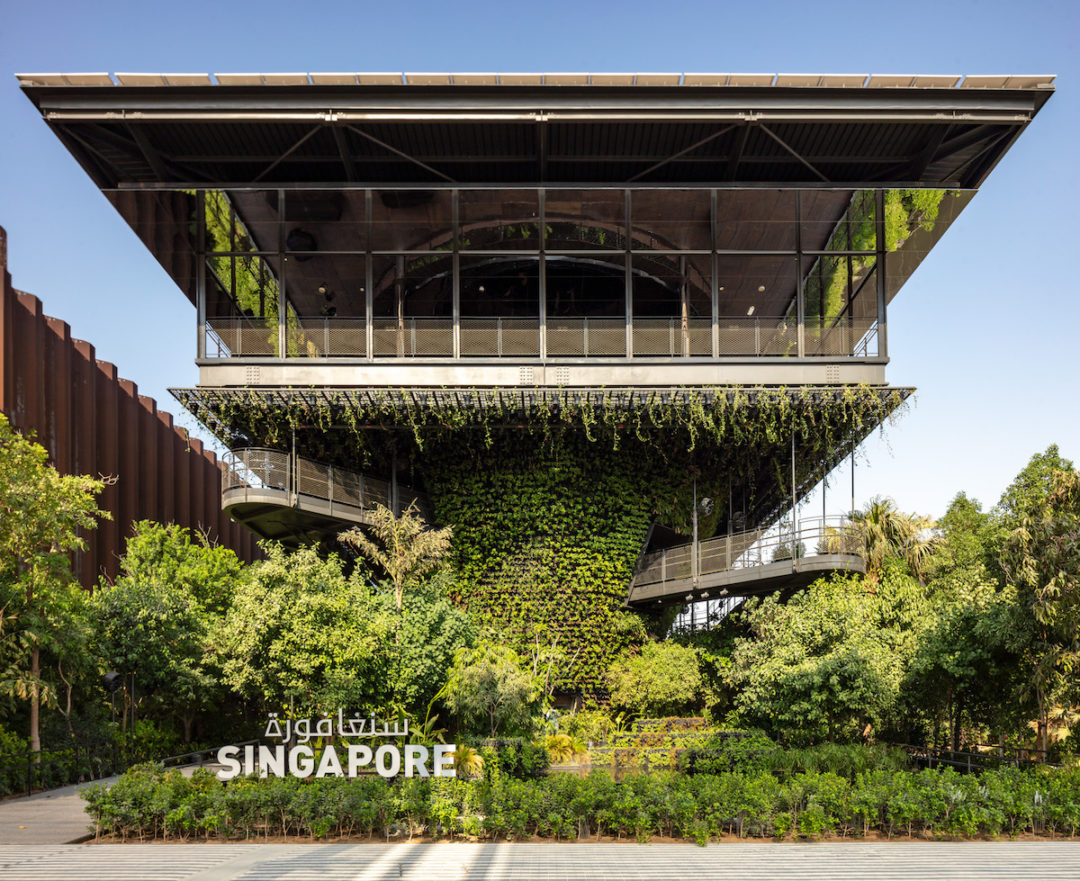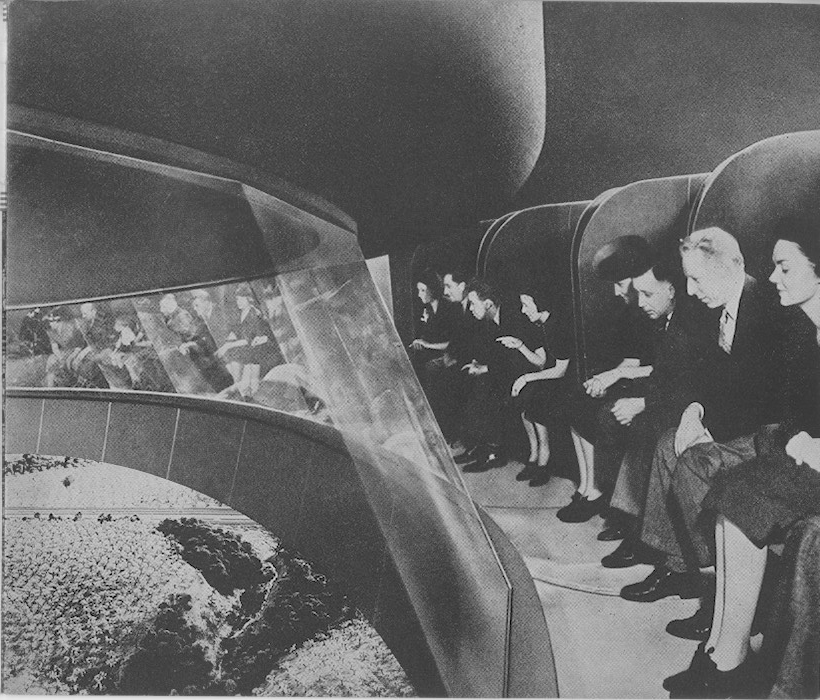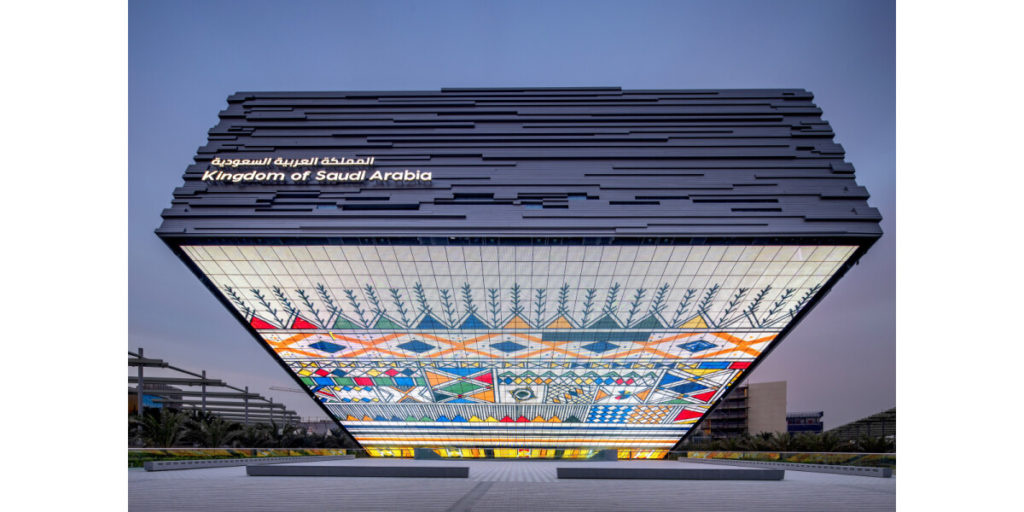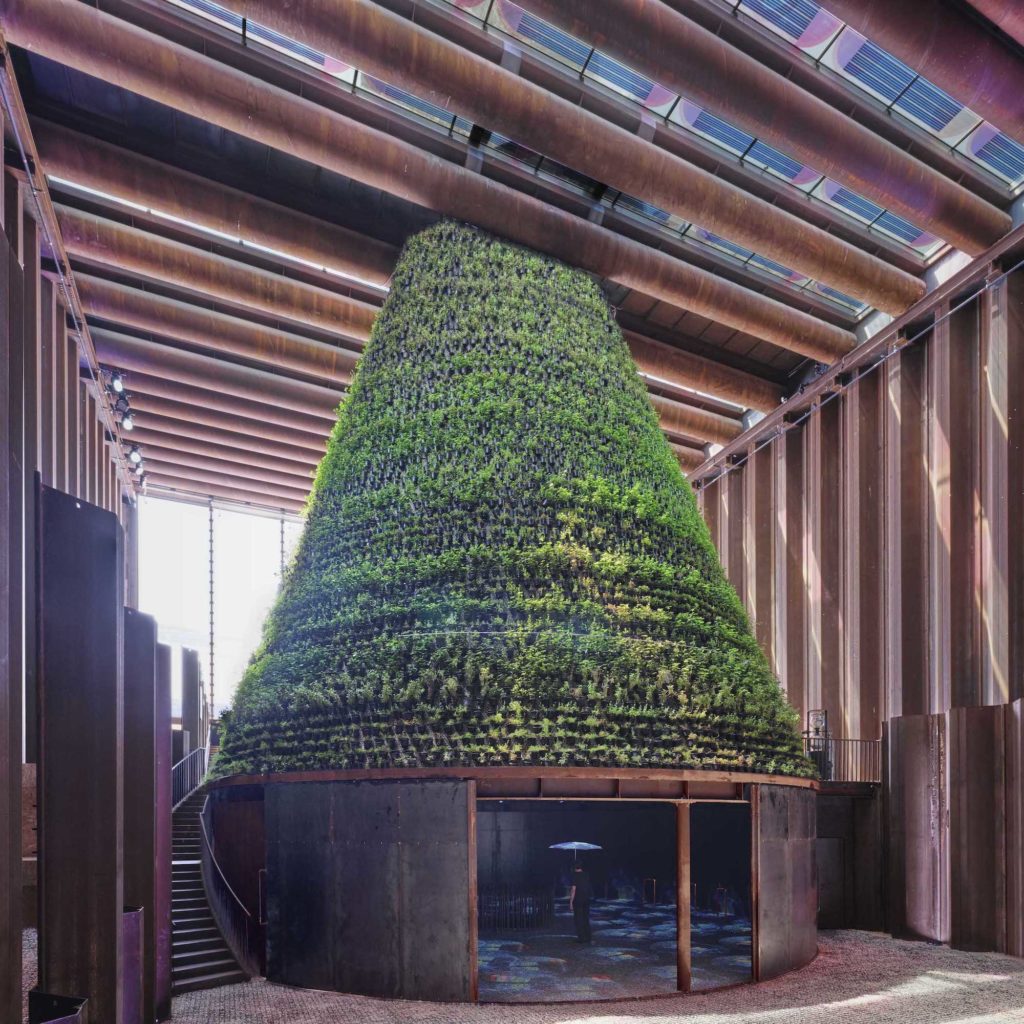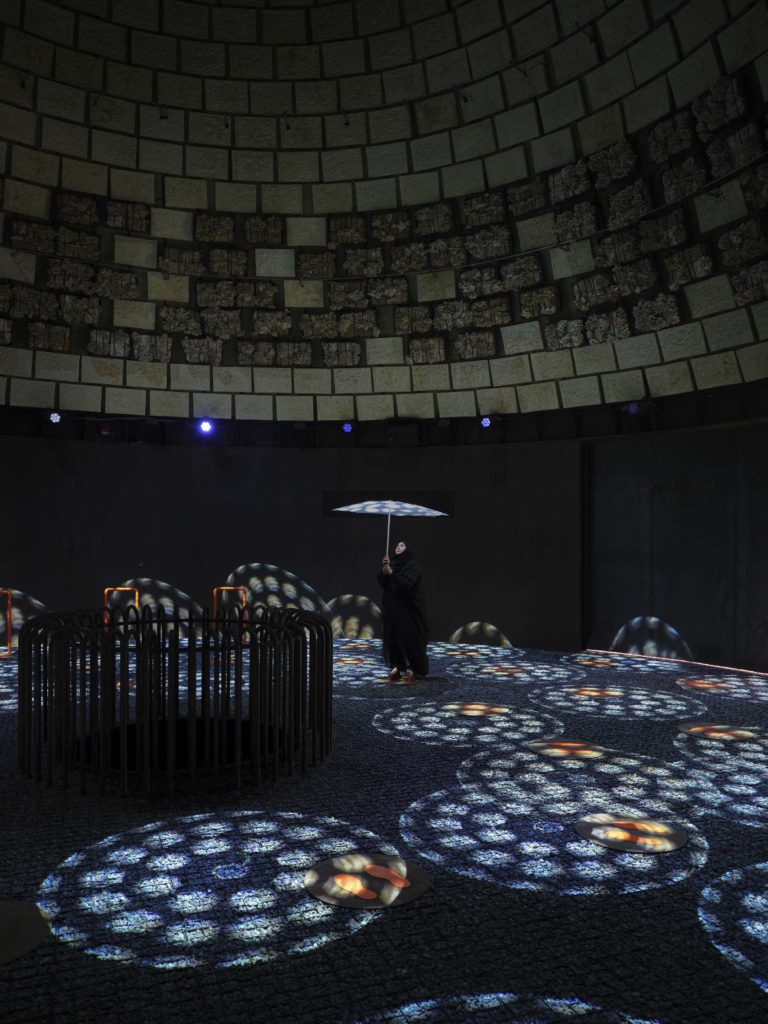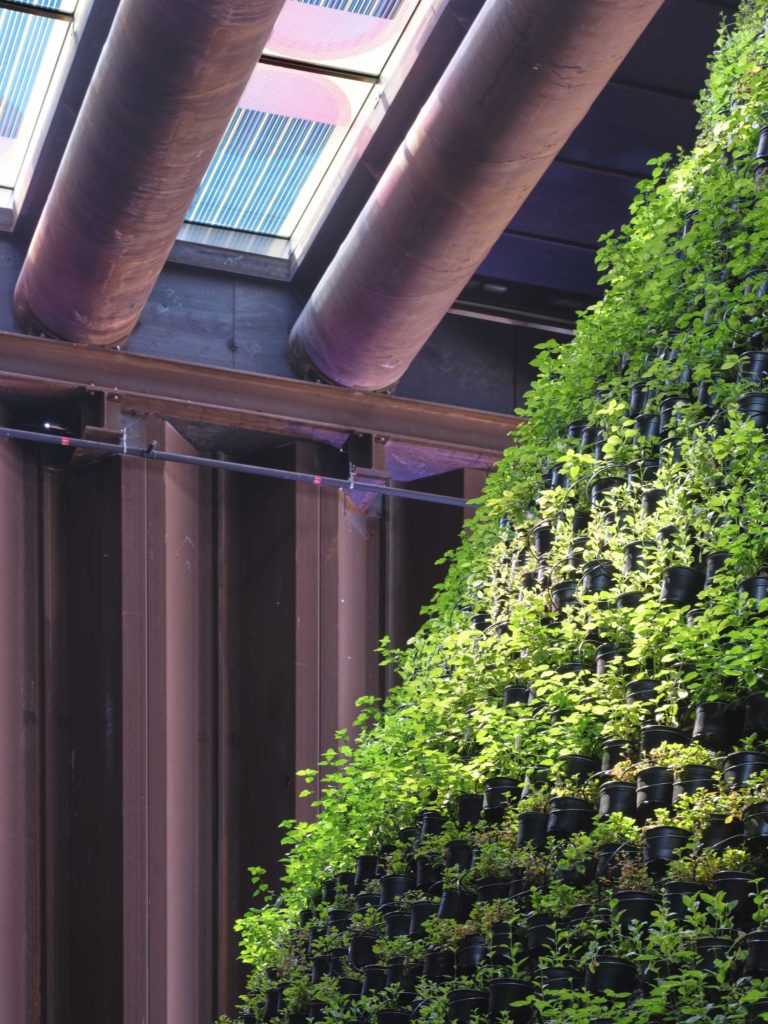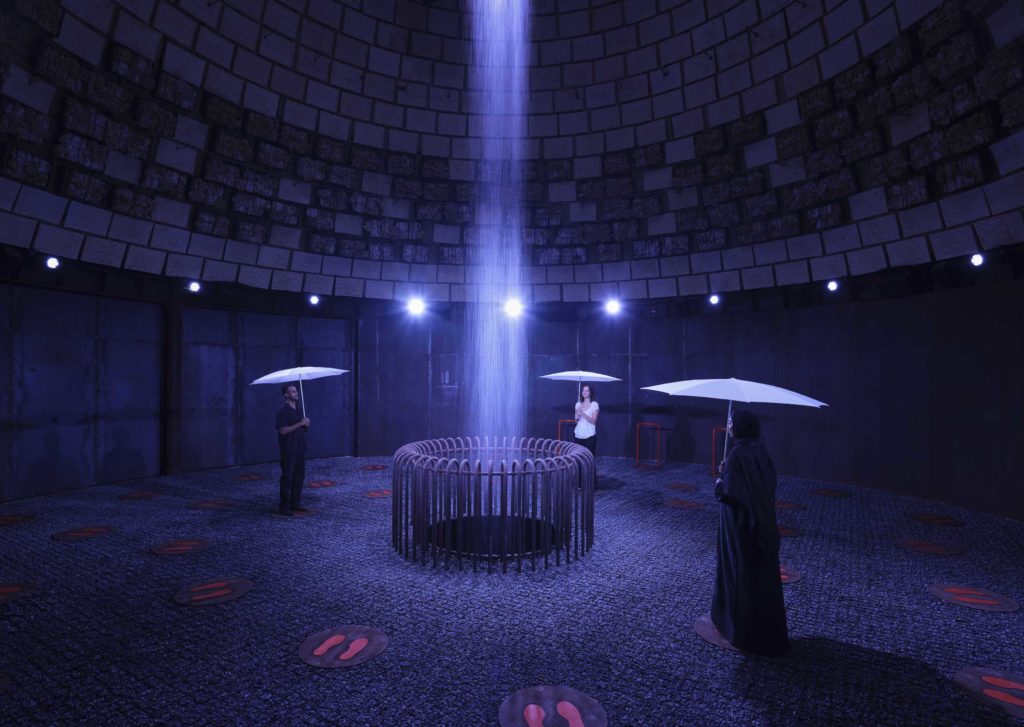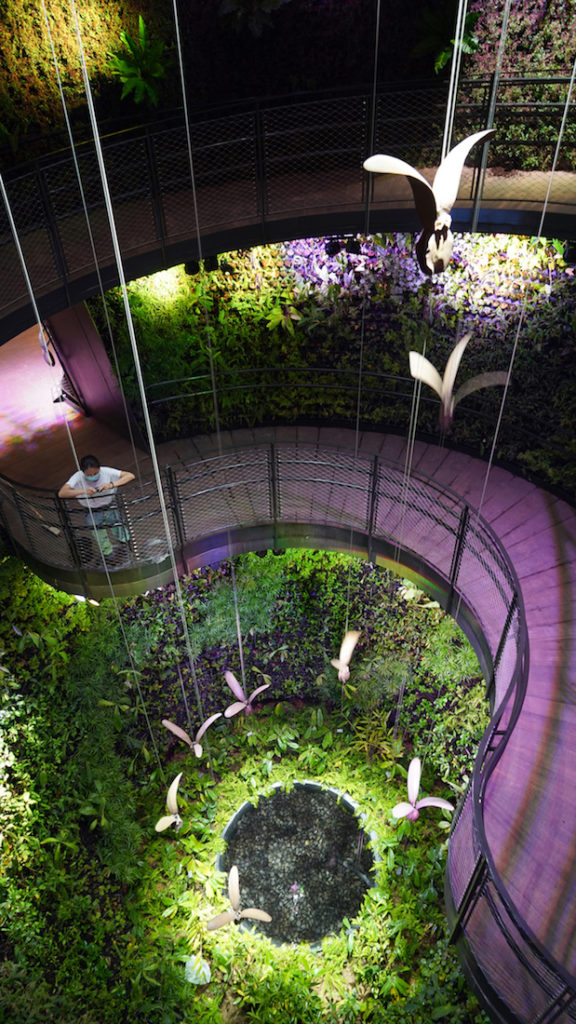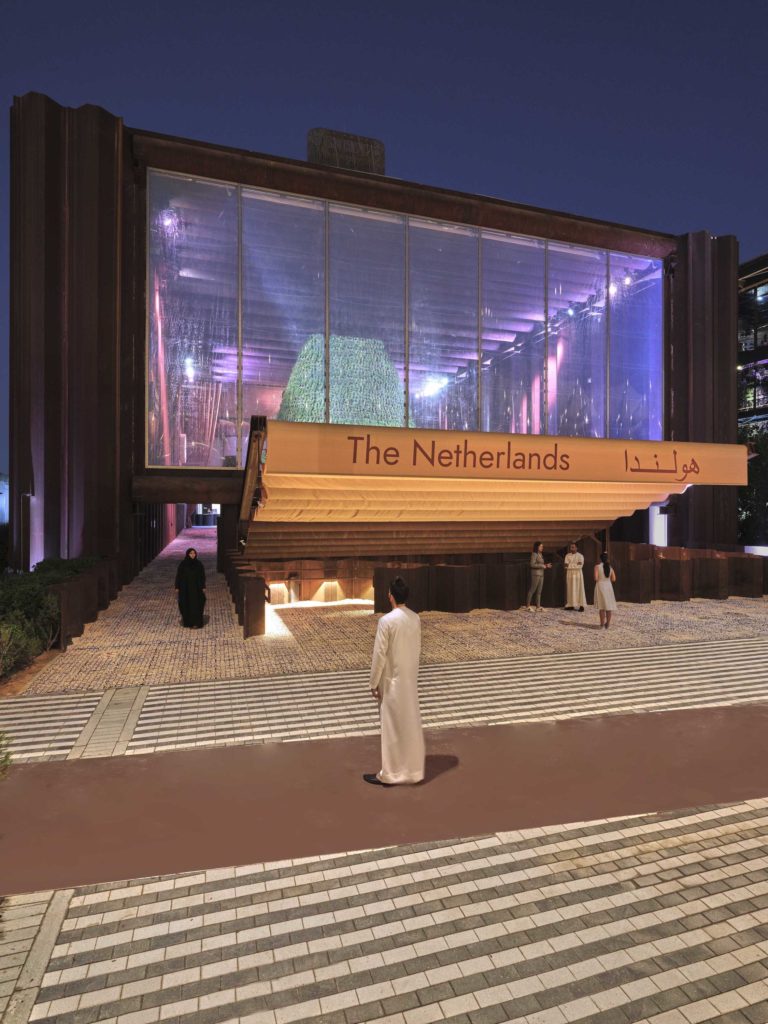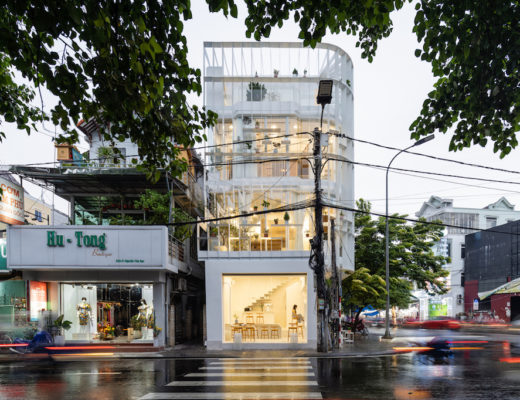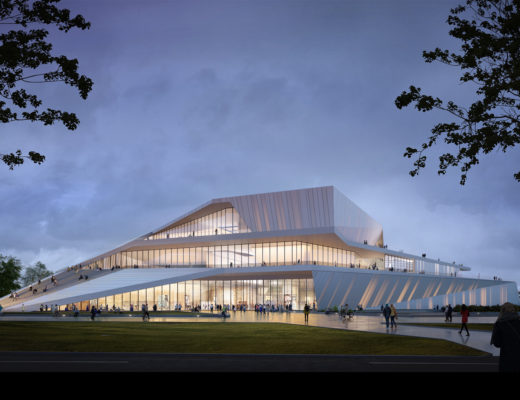With 192 countries participating in the Expo2020 in Dubai, some succeeded in bringing new ideas to the table while others stuck to the same old formula
Last month, a stellar line-up of international performers, such as Ellie Goulding, Andrea Boccelli and Andra Day, gathered in the middle of the desert in Dubai, one of the seven emirates in the United Arab Emirates (UAE). This, however, wasn’t an ordinary concert but the opening of the Expo2020, where representatives of several countries from around the world gathered to partake in an event that promises to showcase each country’s might in different areas such as science, technology and art. Even as the ongoing pandemic continues to upend lives and economies around the world, Dubai has managed to attract a significant number of visitors. Interestingly, it is also the first time the event is being hosted in a Middle Eastern country in the World Expo’s 170-year-old history.

“With an expected visitorship of 25 million visits over a six-month period, the Expo2020 Dubai is an opportunity for our local companies and talents to reach out to a wide range of international audiences and raise awareness of their expertise, innovations and solutions to the world,” shares Larry Ng, Commissioner-General of the Singapore Pavilion, pointing towards the significant business opportunities for all the participating countries including the city-state.
Historically, World Expos have been a platform for countries to come together and showcase innovations and developments in art, science and technology – the first mechanical computer was exhibited at the 1862 London International Exhibition on Industry and Art and Alexander Graham Bell shared his invention, the first telephone, in Philadelphia in 1876. The global event has played host to several big innovations – from popcorn to ice cream cones, Coca-Cola, broadcast televisions, touch screens, the x-ray machine and others that have made their debut over the years.

However, before the advent of technology that created an interconnected world, the World Expos weren’t viewed as trade shows where merchandise exchanged hands. “They were selling ideas: ideas about the relations between nations, the spread of education, the advancement of science, the form of cities, the nature of domestic life, and the place of art in society,” observed American anthropologist, Burton Benedict, in his 1983 book, The Anthropology of World Fairs.
The events also helped to shape the global political and socio-economic dynamics of the times. The epochal transition can be mapped through the various periods – from the Industrial Revolution to colonisation, American hegemony, Cold War and finally, the rise of the Global South.
POWER DISPLAY
While European countries – that occupied over 60 per cent of the world during the 19th century – put their power on display through their colonies and their respective natural resources, American hegemony was centred on creating a world based on its intrinsic values – democracy, liberalism and capitalism.There was also plenty of didactic displays of power. Following the success of the Great Exhibition of 1851 in London, which put the spotlight on industrial development and commercial liberalisation, 14 international exhibitions were held in the first 30 years after 1851, with the figure almost tripling in the next 30 years.
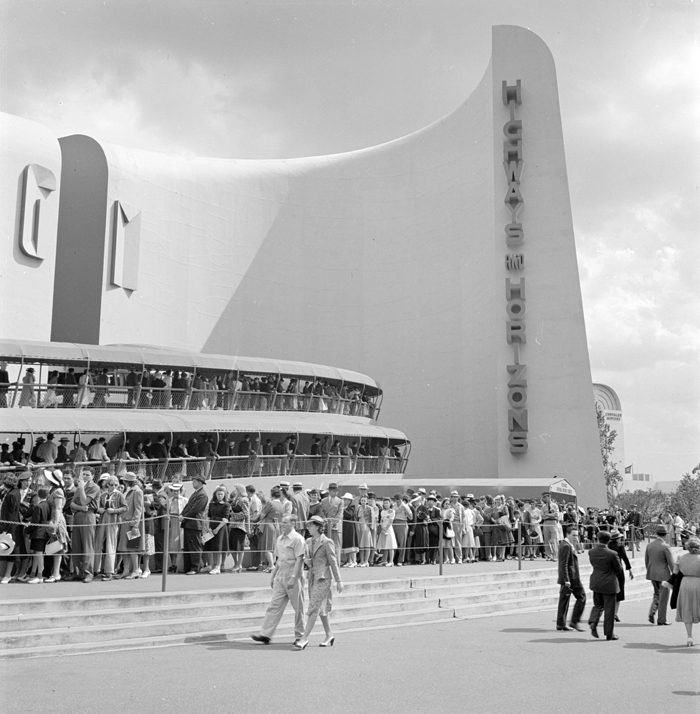
The New York World Fair of 1939 was premised on the ideology of democracy and ‘building the world of tomorrow with the tools of today’. It offered a capitalist-centric platform for innovative corporate organisations to showcase their vision of the future. The exhibit General Motors Futurama showcased a utopian American future – one that was free of slums and offered the American dream to anyone who wanted to live it or get a glimpse of it.
Another interesting exhibit was the Westinghouse Time Capsule which was not to be opened for five millennia. It carried quotidian articles used in 20th century America, such as a dollar in change, a kewpie doll, a packet of Camel cigarettes, copies of Life Magazine and such consumerist items.
Fast forward to the 1958 exposition in Belgium where American rival, Soviet Union, put forward a replica of the Sputnik, flaunting their achievements in the race to space. The US continued with its consumerist trends by presenting a mechanical computer demonstrating a remarkable knowledge of history and a colour television.
Since then, expo events have primarily focused on showcasing the urban growth of cities, architecture and property development – in the hopes of attracting more investment as well as setting the tone of a foreign policy that appeals to the host country’s domestic as well as international stakeholders.
“We are aware that the urban challenges that Singapore is trying to overcome are not unique, and we hope that the Pavilion’s integrated system of greenery, energy management and water management demonstrates possible strategies that can be replicated, adapted, and scaled up anywhere in the world.”
Larry Ng, Commissioner-General, Singapore Pavilion
PROLIFERATION OF NATIONAL PAVILION-THEMED EVENTS
In recent years, architectural biennale and triennial events have mushroomed, in addition to architecture festivals in cities around the world. While the Venice Biennale remains the leading event of its kind, other cities that host similar biennales include Chicago, Shenzhen, Seoul, Istanbul, Lisbon, Rotterdam, Belgrade, Milano, London, Barcelona, Moscow, Tallinn, Oslo, Copenhagen, Brussels, Krakow, Ljubljana Belgrade, Sharjah and Dubai among others.
The Venice Architecture Biennale, the oldest, remains the most influential among all. Although the architecture exhibition had been a part of the bigger Venice Art Biennale since 1968, the former was spun off as an independent entity in 1980 as architecture and architects grew in prominence and cities became the core of urban development.
Over the years, the theme of the Venice Biennale in each of its iterations has stayed firmly focused on the most pertinent topic of the moment, often asking a rhetorical question including revitalisation of stalled economies, climate change and urban development with an eye on making cities more liveable. In a pandemic era, such questions have gained increased prominence.
But with technology creating a far more interconnected world than ever before, can expositions and biennale events continue to be relevant?
At the ongoing Expo2020 in Dubai, the Singapore pavilion addresses the pertinent topic of sustainability, “by setting a future-forward example for the world”, cites Mr Ng. The lush green tropical pavilion that rises from the middle of the desert is themed “Nature. Nurture. Future.”. “It reflects Singapore’s own vision of becoming a City in Nature by showcasing our green strategies or smart urban solutions,” Mr Ng elaborates. “Designed to be light on environmental impact, the Pavilion functions as a prototype of regenerative design which goes beyond simply minimising resources used in construction and operations, to actively restoring, renewing and revitalising sources of energy and materials.”
PURPOSEFUL OR SHEER WASTE
Shanghai-based Egyptian-American architect and professor at Suzhou University, Hisham Youssef, presents a different perspective. “When the World Expo tradition started, the world was a very different place – we were all far less connected,” he says. “Travel was slow, information travelled very slowly, and not everyone had access to information. The need, hence, for a regular gathering of nations to share knowledge and showcase progress, around issues of universal importance to humanity made sense. To be sure, the need to share and collaborate among nations in 2021 is no less important than before, perhaps even greater especially in the face of many issues of greater global relevance to all of us. However, we are now far more connected, almost instantly – on an individual and institutional level.”
Mr Youssef opines that several pavilions are there because they “need to be seen”. “From Shanghai 2000, to Milan 2015 and now Dubai 2020, nations have participated seemingly almost out of peer pressure in an extravagant display of one-upmanship with the design of their pavilions,” he says.
Pavilions, such as Iran, Kingdom of Saudi Arabia and Pakistan, which have been shared widely across social media platforms, exhibit a certain dissonance with the pavilion structure and the programming inside. Pakistan’s gleaming multi-hued scalloped facade is in stark contrast to the earthy clay exhibits inside. Iran is selling its famous carpets; Palestine is letting visitors get a taste of it kanafe (cheese-filled pastry) and ironically, Yemen, a country battling famine, is showcasing spices and honey. For the uninitiated, Dubai, has for the past 25 years, housed a country-themed complex called the Global Village – an enormous bazaar-like setting where tradesmen from several countries have set up semi-permanent shops. Open to visitors for up to six months of the year, these shops sell all sorts of cultural kitsch and foods from around the world.
“From Shanghai 2000, to Milan 2015 and now Dubai 2020, nations have participated seemingly almost out of peer pressure in an extravagant display of one-upmanship with the design of their pavilions.”
Hisham Youssef, Shanghai-based architect and professor at Suzhou University
Questioning whether every nation needs to have its own pavilion at the Expo events, Mr Youssef points out that building these pavilions comes at a great cost and it can’t be justified if there is no relevant message.
Evidently, this year, some national pavilions come out on top for presenting innovation that can be shared and replicated in other regions, rather than displaying an aggrandised inward-looking success.
For instance, the Brazil Pavilion extols the biodiversity of its Amazon Basin even as the country has recently faced harsh criticism of its failure to prevent the rapid deforestation in its Amazonian forest. At the Expo2020, it offers an all-day sensory experience of digital immersion in Brazil’s natural terrain accompanied with dazzling night-time entertainment.
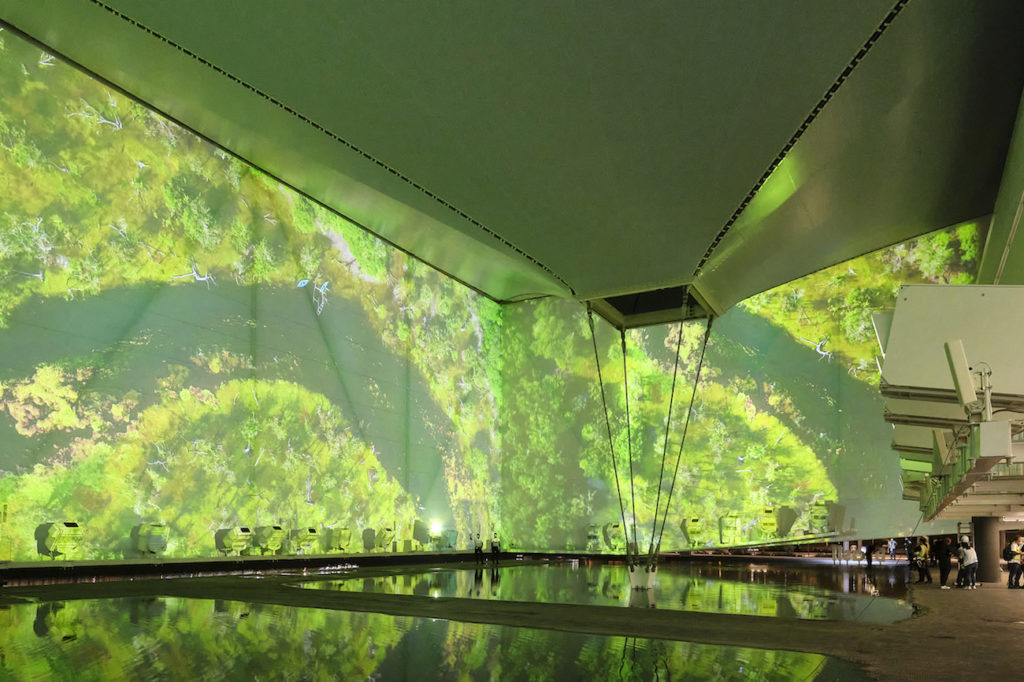
The 24,800 sq. ft structure is covered with a meticulously specified projectable and weather-resistant sheer translucent fabric, illuminated by 140 projectors mapped over 60,000 sq. ft of walls, floor, and ceiling with vibrant video. Through the installation, designed by New York- and Brazil-based tech-design specialist, Cactus, the Brazil pavilion wants to tell stories that are perhaps a hybrid of fact and fiction, largely due to the disconnect between reality and what the country would like you to see.
While the platform indeed provides a voice to all the participants – both developed and developing nations – whether they are able to share a message that is relevant and congruent with the overall context has differing perspectives.
Country pavilions such as those from war- and civil unrest-stricken countries such as Yemen, Syria and Myanmar, marred by political happenings back home, seem to have become mere mentions on a long list of 192 countries of the 194 member states of the United Nations, with the exception of North Korea and Afghanistan, that are participating in the Expo2020. Yet other countries, such as Iran, Pakistan, India, Tunisia and most Central Asian nations rely on their rich craft offerings, in the hopes of gaining more cultural and commercial traction in the absence of any groundbreaking innovations to share with the world.
“Nations perhaps need to make a good case for why they need a pavilion: how will the pavilion contribute to the overall Expo theme; what will they showcase?”
Hisham Youssef, architect and professor at Suzhou University
AN EYE ON INNOVATION
When it comes to innovation, few countries can compete with the small island-state of Singapore, which has built an international standing on the back of forward-thinking ideas that are aimed at improving quality of life in urban cities. Its developments policies are now driven by its increased emphasis on transforming itself from a “Garden City” into a “City in Nature” – a strategy that is evidently on display at the Expo2020.
“We are aware that the urban challenges that Singapore is trying to overcome are not unique, and we hope that the Pavilion’s integrated system of greenery, energy management and water management demonstrates possible strategies that can be replicated, adapted, and scaled up anywhere in the world. We hope to work with like-minded partners and exchange ideas in our journey to create long-term sustainable and resilient cities for the future,” says Mr Ng.
“The harvesting machine [at the Netherlands Pavilion] has been scaled up in the last three years to the current version, for which the crucial elements have been assembled in a shipping container on the roof of the pavilion. So yes, this prototype can go anywhere and yes, it can be easily replicated.”
Michiel Raaphorst, architect-director and co-founder of V8 Architects
At Expo2020, the great idea that Singapore wants to share with the world through its tropical paradise pavilion, Mr Ng says is “the realisation of a plant-rich yet sustainable pavilion in a desert environment”. “It shows that every country can also create sustainable ecosystems within their urban landscapes using innovative and sustainable solutions.”
The Netherlands Pavilion, too, appears to have given much thought to this aspect. Even as the conical structure of the pavilion has been designed to be a visual delight, the architecture practice, V8 Architects, sought to address a deeper correlation between the context and the brief.
In the bone-dry desert topography, where scarcity is stark and severe, the biggest challenge for the Dutch pavilion was to create a synergistic and meaningful representation between resources such as water and energy, and food production. The resulting harvesting machine acts as a biotope, where agriculture is experienced as a smart fusion between technology and art. Some of the innovative Dutch concepts seen at the pavilion include the solar-powered rain shower ‘SunGlacier’, that allows it to harvest hundreds of litres of water every day. The solar cells in the pavilion’s skylights, devised by solar designer Marjan van Aubel, together with regular solar roof panels, provide the SunGlacier with electricity. At the same time, these skylights allow sunlight to enter the pavilion, which the plants need for photosynthesis.
“All of these technological features have been tested in the most dry and hot circumstances,” shares Mr Michiel Raaphorst, architect-director and co-founder of V8 Architects. “The harvesting machine has been scaled up in the last three years to the current version, for which the crucial elements have been assembled in a shipping container on the roof of the pavilion. So yes, this prototype can go anywhere and yes, it can be easily replicated.”
Context in the framework of sustainability seems to be the emphatic belief at Expo2020 for most countries that are attempting to find solutions in the face of growing pressure to address climate change. Technology has become an important enabler in this endeavour.
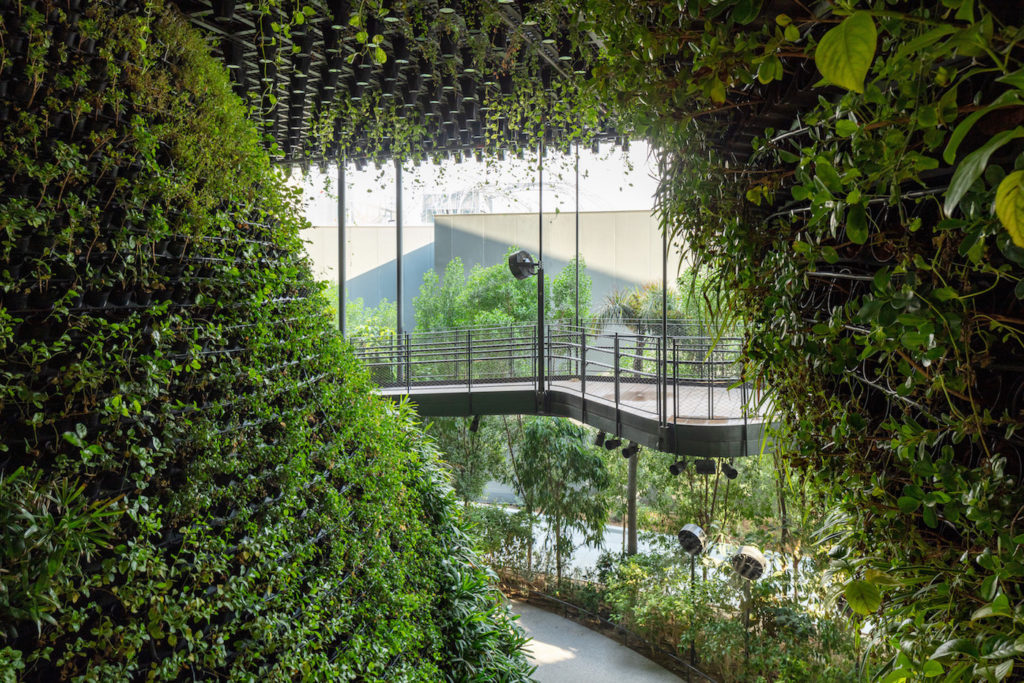
“The Singapore Pavilion’s 517 solar panels on the roof canopy generate enough electricity to power the Pavilion throughout the six-month duration of the Expo,” shares Mr Ng. “This includes a solar desalination process that produces desalinated water that is used for various purposes, including drip irrigation for over 80,000 plants, as well as dry mist fans that help to lower perceived ambient temperature and increase thermal comfort for visitors. These urban solutions are complemented by a careful planting strategy that not only provides shade for visitors, but enables the creation of microclimates to sustain rainforest plants that are native to Singapore.”
A reflection of just how successful this ecologically-driven attempt has been was perhaps in a social media post – a family of doves that found the verdant environs so comfortable that they decided to build a nest there – shared by the award-winning practice WOHA, the firm behind the Singapore Pavilion; its landscaping was designed by Salad Dressing and lighting design by another Singapore firm Light Collab.
Singapore-based ecological design consultant BioSEA worked with WOHA Architects to measure the ecosystem service performance of the vegetation at the Dubai Expo Singapore pavilion. The company noted that the vegetation sequesters 61 tonnes of CO2 over its lifespan. It is also 2.66 times more effective than Dubai’s desert vegetation in sequestering carbon over a similar area.
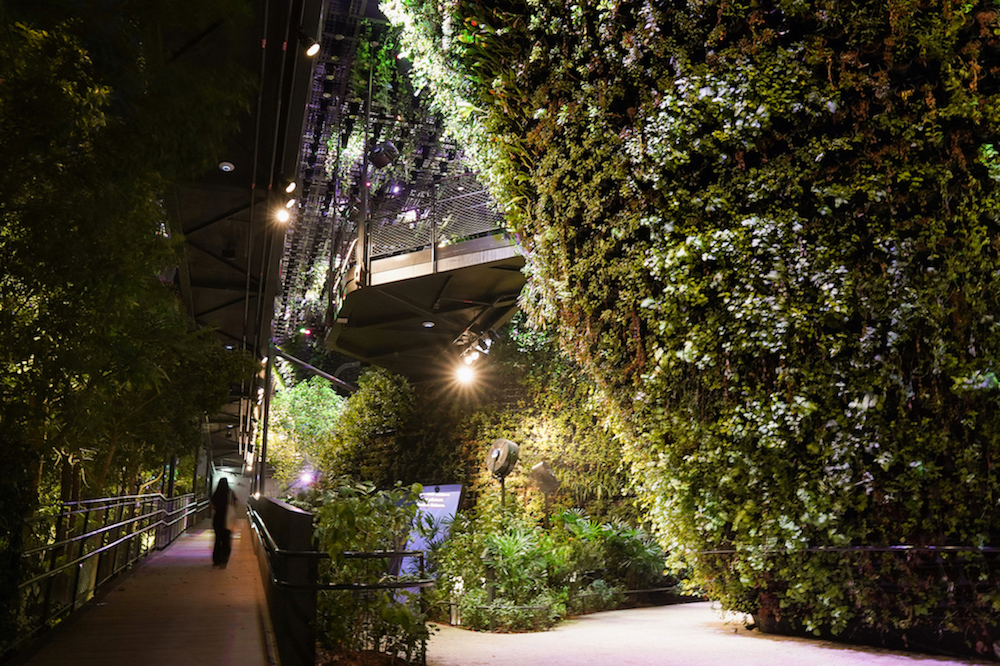
Other country pavilions that harnessed sustainable technologies to present thought-provoking and practical solutions to universal climate challenges include those of the Czech Republic and Germany. Host country UAE revealed its advances in the space exploration programme while countries such as Australia and Switzerland have taken the sustainable tourism promotion route, albeit not explicitly stated.
But what happens to these pavilions once the expo is over? Most will be dismantled with no clear and practical use. “It seems rather counterintuitive to work on finding a solution for a problem that did not have to be there in the first place, especially where sustainability has become a top agenda item for all initiatives,” posits Mr Youssef.
“The Singapore Pavilion’s 517 solar panels on the roof canopy generate enough electricity to power the Pavilion throughout the six-month duration of the Expo. This includes a solar desalination process that produces desalinated water that is used for various purposes, including drip irrigation for over 80,000 plants, as well as dry mist fans that help to lower perceived ambient temperature and increase thermal comfort for visitors.”
Larry Ng, Commissioner-General, Singapore Pavilion
Circular construction is at the core of all the pavilions showcasing in the Sustainability district of the Expo2020; other main segments in the masterplan by HOK, in collaboration with Populous and Arup, include Opportunity and Mobility pavilions. This was vital to the design of the Netherlands Pavilion, for which V8 Architects rented local construction materials that will be returned to the Dubai building industry after the event.
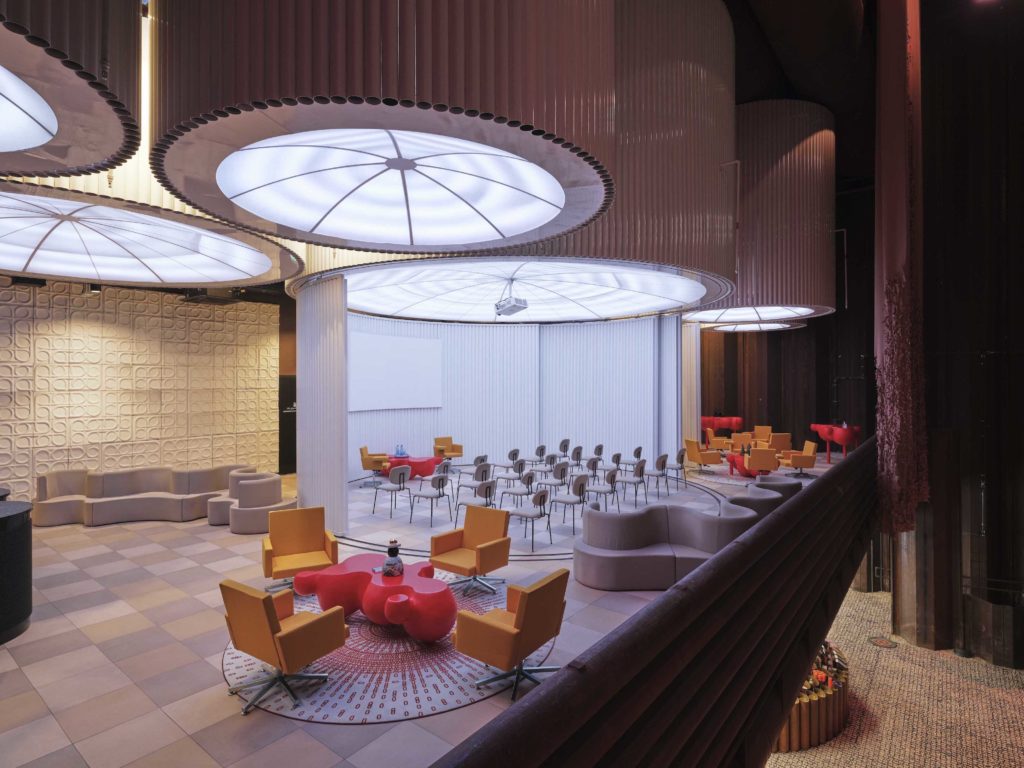
“This is because we use civil engineering materials like sheet piles and steel tubes,” says Mr Raaphorst. “It is purely a temporary structure which is locally harvested. The interior finishes in the pavilion are bio-based and therefore degradable. The dilemma of building material waste is not only a dilemma of the Expo, it is a dilemma of the construction industry worldwide, which we can only solve by thinking in a circular way and moving towards the use of bio-based materials. As guests to this event, we leave behind an empty plot after dismantling our circular pavilion. Our plot becomes part of the new urban development after Expo2020. This minimal footprint was crucial for use during the design process.”
“The dilemma of building material waste is not only a dilemma of the Expo, it is a dilemma of the construction industry worldwide, which we can only solve by thinking in a circular way and moving towards the use of bio-based materials.”
Michiel Raaphorst, architect-director and co-founder of V8 Architects
JUSTIFYING THE GLOBAL SPECTACLE
As humankind continues to urgently combat the healthcare and climate change crises at hand, it has become increasingly challenging to not just organise events of such a magnitude but also justify its ecological and financial impact.
Could there be an alternative model to having a physical event of this magnitude? “There are alternatives already in place, or at least for a substantial attempt as a new hybrid event,” says Mr Raaphorst. “In our pavilion, we host an event almost every day, attended by local people and attended virtually by people all over the globe. Our world is simply not digital. Add to this the legacy of the Expo in urban planning and public transport connections, we have confidence that the investments made by the UAE are for the long term.”
Mr Youssef presents a counterpoint, adding that he is not against the idea of Expo events but that the current model of a wasteful carnival-like extravaganza to celebrate everything – from culture to commerce – perhaps needs to be revisited.
“A clear theme is, of course, necessary to focus the ‘conversation’ and direct the Expo effort,” he says, recalling an earlier point about reassessing the need for every nation to have a pavilion. “Nations perhaps need to make a good case for why they need a pavilion: how will the pavilion contribute to the overall Expo theme; what will they showcase?”
Reuse of large pavilions into the host country’s development plans should be a non-negotiable criterion. “Large themed pavilions with a clear eye for a repurposing post-Expo should be the focus, with contributions from various nations and organisations,” suggests Mr Youssef.
He continues: “Almost 10 years on, Shanghai is finally developing the Expo site into an integral part of the overall urban plan of the city, but Shanghai is a large metropolis of 24 million, and the Expo took place at a time of great economic growth and urban development, so incorporating the site and its pavilions into the city plan was not too difficult. That may not be the case everywhere.”
“Until profits and the extravagant image are not the primary drivers for the host country and the Expo itself, the Expo will likely continue along its current trajectory for as long as its value is not questioned.”
You might also like:

